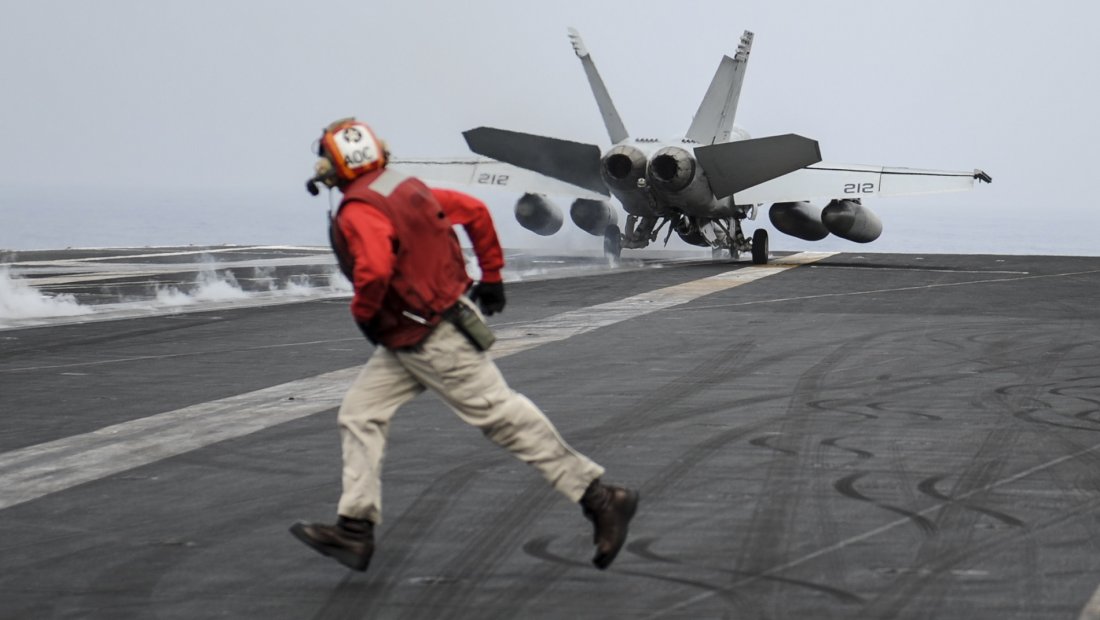In short, how U.S. commanders arrange forces on the nautical chart and sequence operations will help determine whether a carrier suffers assault from North Korean warbirds, surface or subsurface craft, or antiship missiles.
Could North Korea’s armed forces sink an American aircraft carrier? Yes—depending on what type of carrier they confront, how skillfully U.S. Navy commanders employ the flattop and its consorts, how well North Korean warriors know the tactical surroundings and, most crucially, whom fortune favors in combat. Fortune is a fickle ally, prone to switch sides and back again in battle. It’s doubtful an American carrier would fall prey to undersea or aerial attack—but only the foolish say never or always in martial competition, a topsy-turvy affair in which the weak sometimes best the strong.
It could happen, and that warrants forethought.
First, some preliminaries. We know for a fact that the DPRK Navy can sink surface vessels. It did so in 2010, launching a sneak submarine attack on the South Korean corvette ROKS Cheonan. Granted, Cheonan was a single ship operating alone, not the centerpiece of a carrier or amphibious task force ringed with escort ships equipped to hunt and assail submarines. The Cheonan incident nevertheless offers proof, if more is needed, of a timeless truth about undersea combat: even a technologically backward diesel sub running slowly—and thus silently—can approach, strike and sink a modern surface craft crewed by highly professional mariners such as those comprising the ROK Navy. The same could befall the U.S. Navy.
Indeed, examples are legion of weaker navies equipped with subs giving superior foes fits. In 1982, a Royal Navy task force defending the Falkland Islands expended most of Great Britain’s war stock of antisubmarine ordnance in a vain effort to dispatch a single Argentine Type 209 diesel-electric boat, ARA San Luis . The Argentine skipper reportedlybrought his craft to rest on the seafloor in time-honored fashion. Stopping propulsion eliminated machinery noise, letting San Luis evade detection. Tactics refined during World War II worked on the lesser combatant’s behalf against a NATO navy optimized for antisubmarine combat.
Or take 2006, when a Chinese Type 039 Song-class diesel boat slipped through the defenses of the USS Kitty Hawkcarrier strike group, surfacing about five nautical miles from the flattop. While the carrier group wasn’t on guard against submarine attack, navy spokesmen nonetheless voiced concern that the Song’s approach had gone undetected. As well they might: antisubmarine warfare isn’t just a difficult art, but one the U.S. Navy consciously let slip after the Cold War. That’s when the leadership resolved to transform the sea service into a “fundamentally different naval force” that ventured only perfunctory efforts to prepare for high-seas combat. It is playing catch-up in the undersea realm.
It’s amusing when commentators describe this or that submarine as a “ stealth submarine .” Presumably that word stealth exudes sex appeal, and generates web traffic. But all subs are stealthy. A nonstealthy sub is wreckage strewn across the seafloor. DPRK skippers have demonstrated they can avoid that fate—and do their job—should they exploit their advantages at a time when circumstances align in their favor. Yes, American carriers are heavily armored and so forth, as carrier proponents like to say, and yes, sinking one would represent no easy feat. That’s a commonplace. But we’ve known for nearly a century that armored ships can be sunk by aerial, surface, or subsurface attack. Indeed, U.S. Navy aviators , battleship gunners and submariners honed antiship warfare to a fine art seventy-five years past, even before precision-guided munitions made their debut. There are no grounds for hubris vis-à-vis the DPRK Navy.

